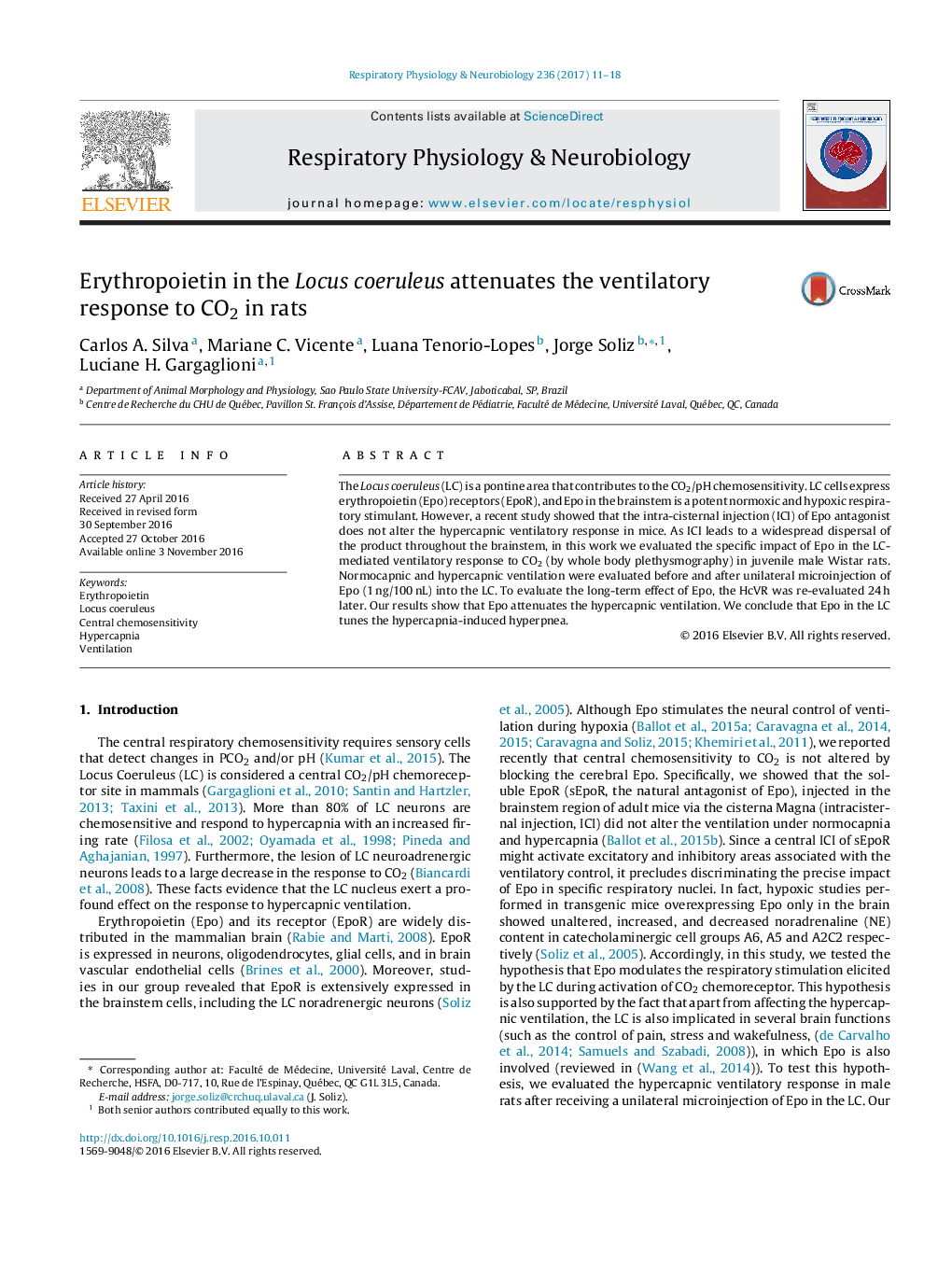| Article ID | Journal | Published Year | Pages | File Type |
|---|---|---|---|---|
| 5594182 | Respiratory Physiology & Neurobiology | 2017 | 8 Pages |
Abstract
The Locus coeruleus (LC) is a pontine area that contributes to the CO2/pH chemosensitivity. LC cells express erythropoietin (Epo) receptors (EpoR), and Epo in the brainstem is a potent normoxic and hypoxic respiratory stimulant. However, a recent study showed that the intra-cisternal injection (ICI) of Epo antagonist does not alter the hypercapnic ventilatory response in mice. As ICI leads to a widespread dispersal of the product throughout the brainstem, in this work we evaluated the specific impact of Epo in the LC-mediated ventilatory response to CO2 (by whole body plethysmography) in juvenile male Wistar rats. Normocapnic and hypercapnic ventilation were evaluated before and after unilateral microinjection of Epo (1Â ng/100Â nL) into the LC. To evaluate the long-term effect of Epo, the HcVR was re-evaluated 24Â h later. Our results show that Epo attenuates the hypercapnic ventilation. We conclude that Epo in the LC tunes the hypercapnia-induced hyperpnea.
Related Topics
Life Sciences
Biochemistry, Genetics and Molecular Biology
Physiology
Authors
Carlos A. Silva, Mariane C. Vicente, Luana Tenorio-Lopes, Jorge Soliz, Luciane H. Gargaglioni,
